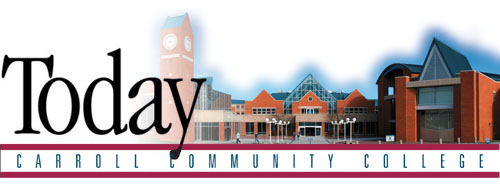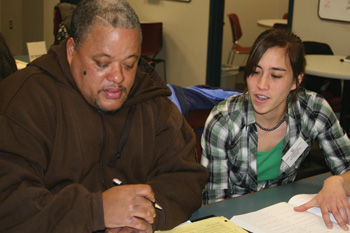
| Spring 2012, No. 58 |
|
ContentsRandom House Book Fair Set for Saturday, March 3, 2012 AACC Identifies 10 Trends Affecting Community Colleges Miller Center for Small Business Key Partner in New Carroll Business Path Three-fourths of Carroll Business Locations Employ Fewer than Ten Workers Carroll County and Maryland Household Statistics
|
| AACC Identifies 10 Trends Affecting Community Colleges | ||
|
The American Association of Community Colleges has identified 10 trends that will significantly affect community colleges for the foreseeable future. This national outlook provides a broader context for the environmental scanning the college is undertaking in support of development of Compass 2015, its next three-year strategic plan. 2. Institutional financing will be of paramount concern. Fiscal constraints will be the "new normal" requiring actions beyond such traditional cost-savings as restricted travel or larger classes. The need to serve more students will put more pressure on support services, and introduction of new programs will be difficult to afford. 3. Public funding will remain stagnant at best. Nationally, educational appropriations per FTE at public colleges, in constant 2010 dollars, are the lowest since that figure has been recorded (1985). 4. A broad, multifaceted mission will be assumed. Despite financial constraints, community colleges will continue to be viewed as the workhorses of higher education and may be asked to do more. 5. The student population is changing and becoming more diverse. More students will come from underrepresented minority groups; nationally, enrollment of Hispanic students is projected to increase 45 percent and African Americans by 30 percent through 2019. 6. Accountability demands will sharpen, with continuing emphasis on completion. With local and state economies under stress, institutions receiving direct public subsidies will be subject to greater scrutiny. 7. Student preparation will remain an acute problem—perhaps the biggest challenge facing institutions. Sixty percent of entering community college students are underprepared to do college work, and K-12 reform efforts are unlikely to ameliorate that significantly. 8. Competition will become keener. For-profit, corporate, and other nontraditional educational providers will continue to expand. 9. Better alignment with other educational institutions is needed and will be expected. Community colleges must help move the needle in K–12 reform and improve transfer between two-year and four-year institutions. 10. Leadership development presents significant challenges. Retirements of community college presidents and senior administrators will continue to accelerate over the next five to 10 years. Finding appropriately-skilled leaders will be challenging, fueling recruitment from fields outside of education.
Students at Carroll who need help with their studies can turn to the college's Academic Center for assistance from professional and peer tutors, or access online tutoring. The popular service, which is provided at no additional cost to students, had 400 tutoring sessions by appointment plus nearly 1,000 drop-in visits in the fall by students requesting help in math, science and English. Students also accessed help 24/7 for math and chemistry through Carroll's online tutorials. The Academic Center has 62 peer and professional tutors. |
||
